In this section we will show you how to use an export of a Buyer's Buy List to create a Supplier Catalogue
Updated over a week ago
Let's create a new catalogue or quote from our Buyer's Buy List.
1. Open the Buy List export file from your Customer.
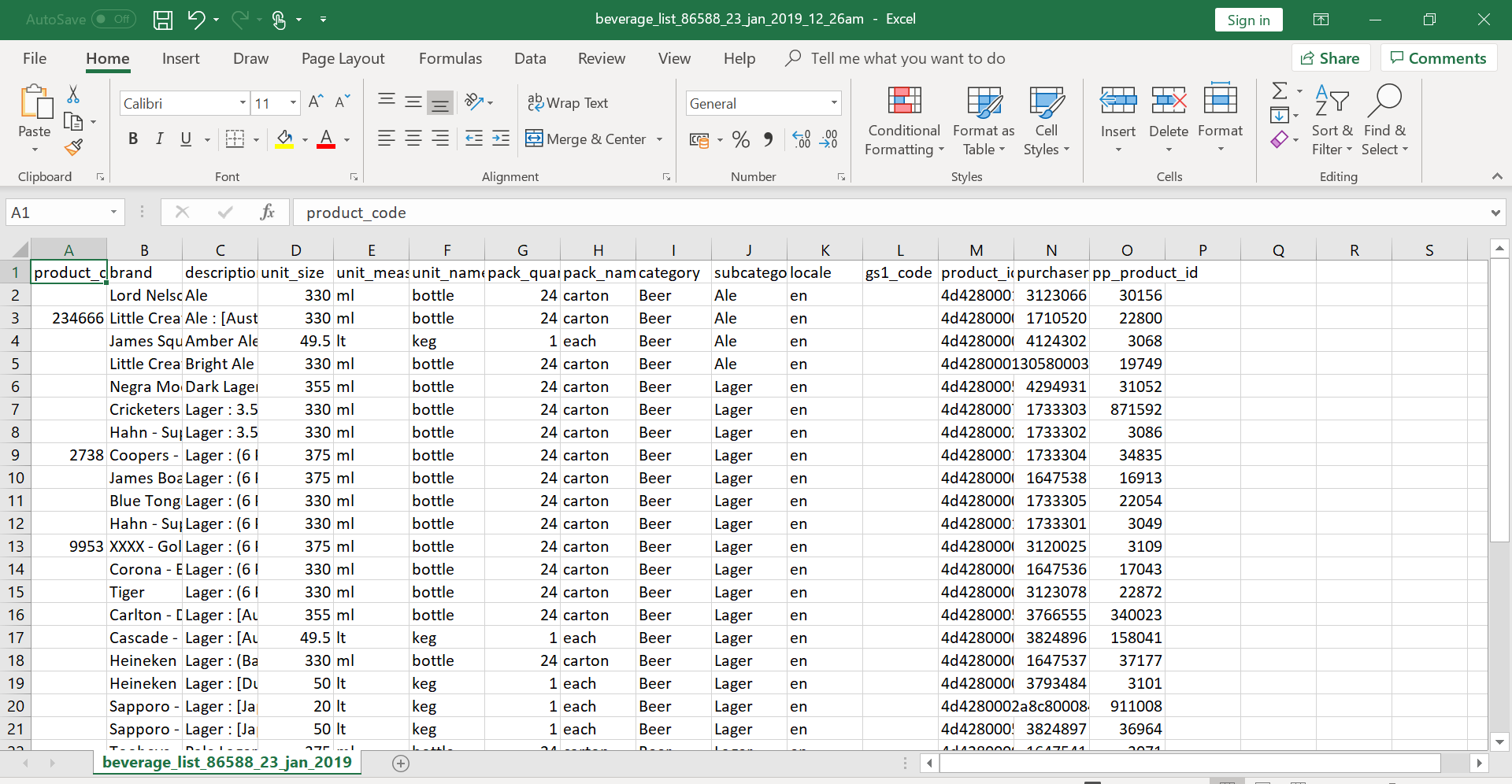
2. Insert two new columns to the right of column H and name them "pack_price_ex_tax" and " tax_percentage"
Input your LUC price ex. gst, and tax percentage for any products you supply in columns I and J as well as your product codes in column A.
Delete any rows of products you do not sell.
(Note - The price should be for the pack quantity)
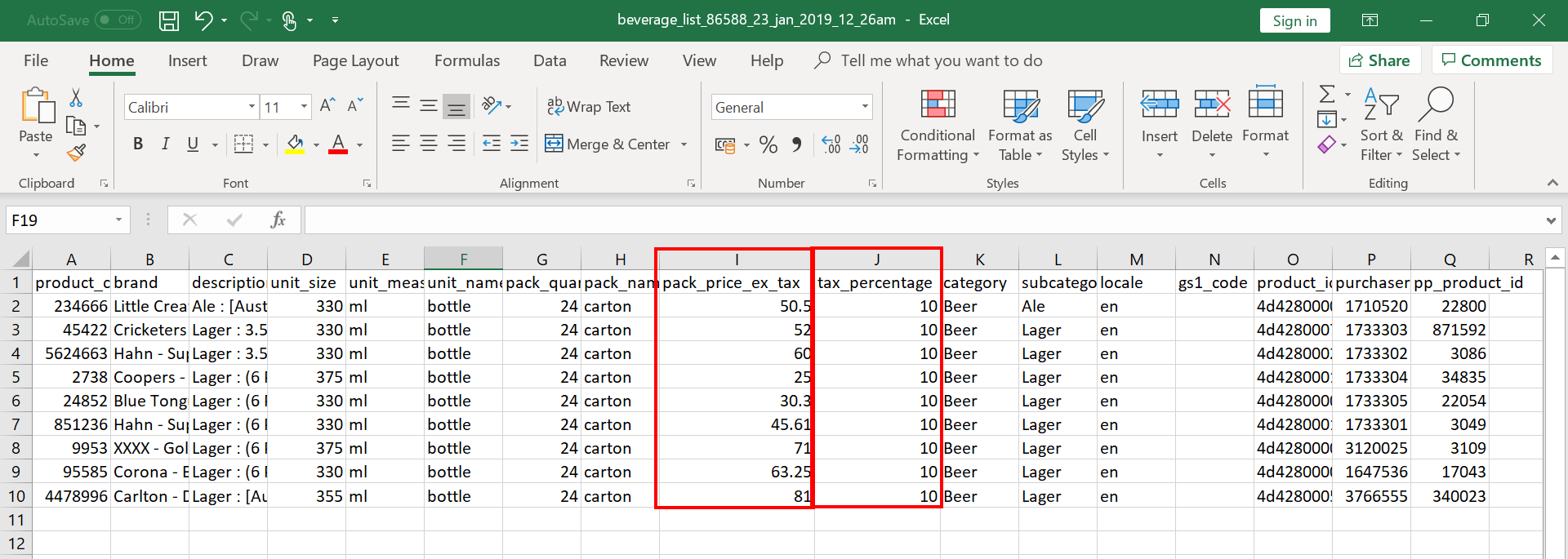
3. To prepare the file for import, clear all the product data (excluding column headers) from all column leaving only Column A (product_code,) Column I (pack_price,) Column J (tax_percentage) and Column Q (pp_product_id).
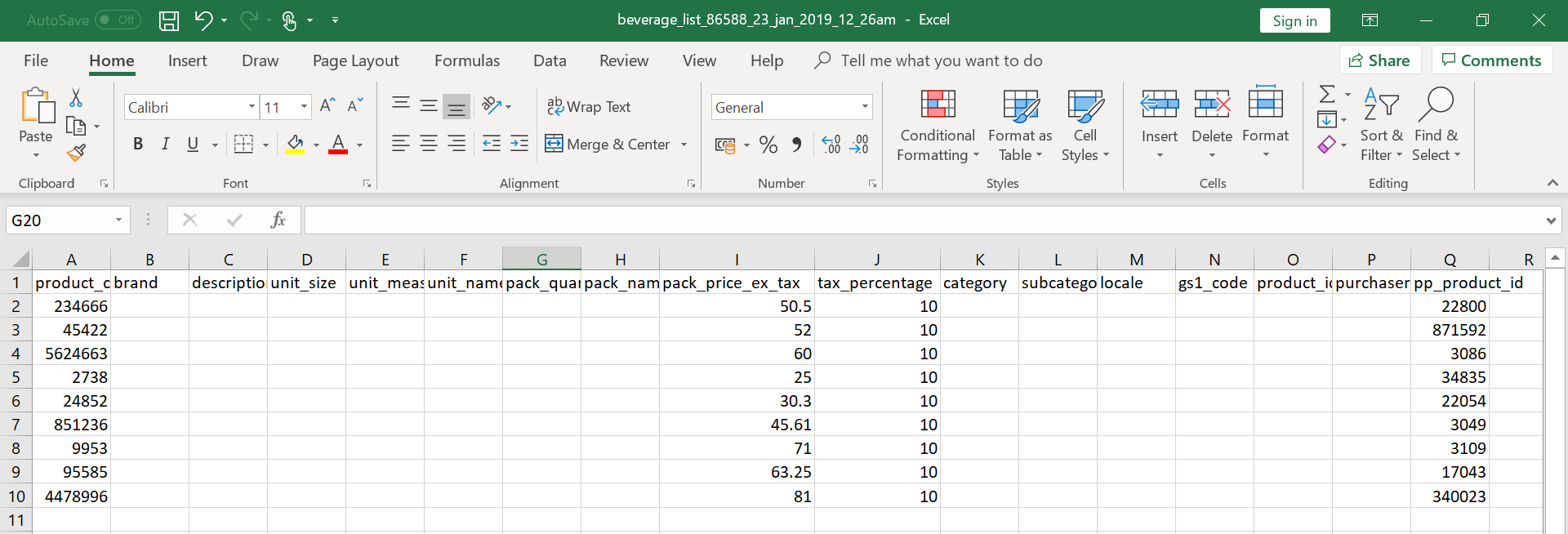
4. In Purchase Plus, go to [Catalogues,] [Supplier Catalogues] and click the green [+] to create a new Catalogue. Name the Catalogue and hit <ENTER>.
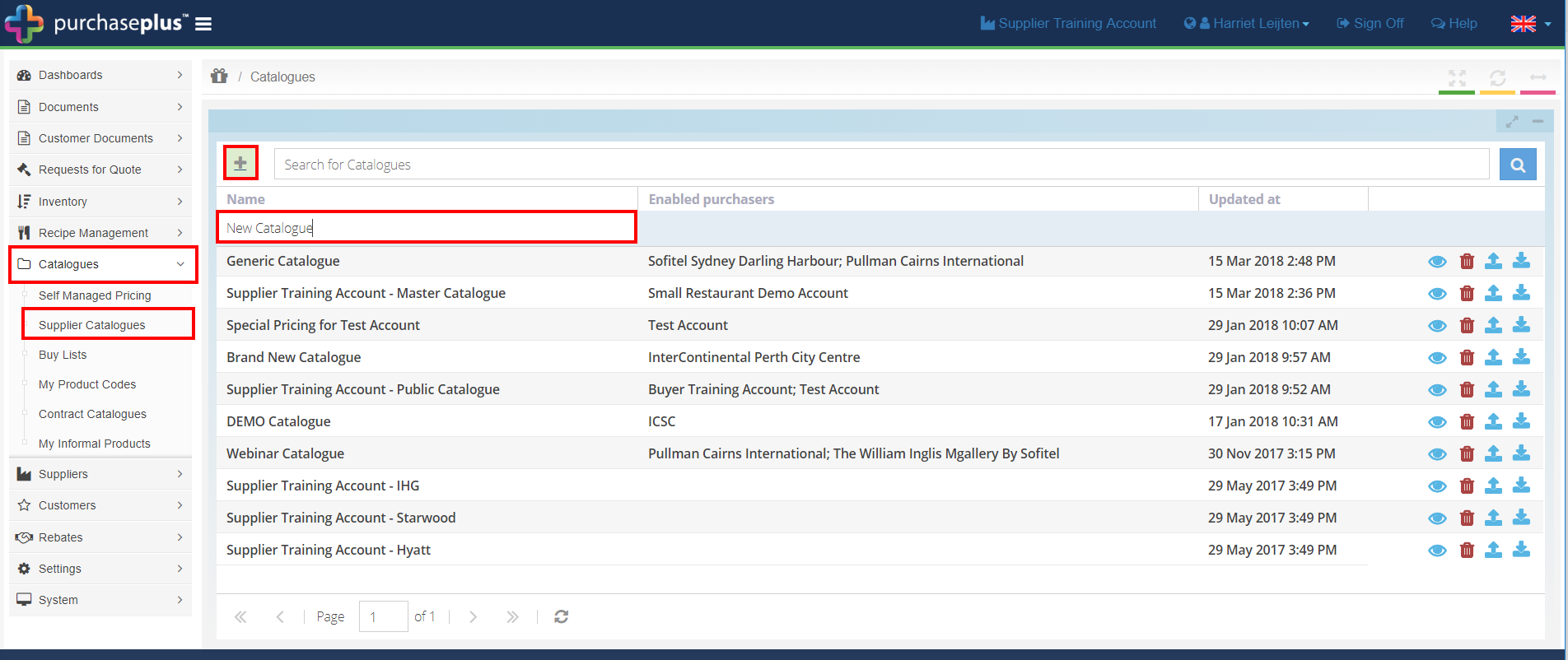
5. Click on the [Import] icon to the right of your new Catalogue and [Browse] for the .CSV file you just created. Then click [Save.]
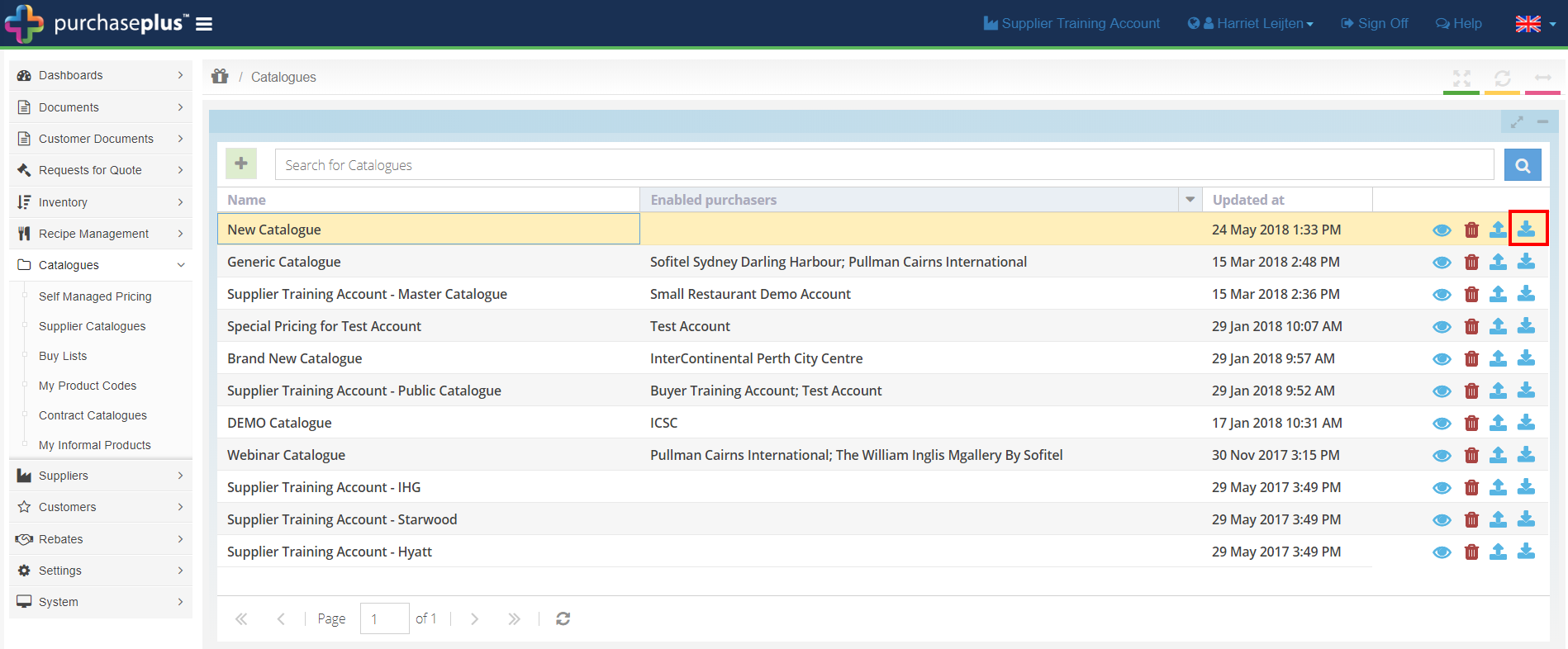
If you want your catalogue to be scheduled for a future date and time, input the date, hour and minute in the appropriate fields.

6. The Import will initially appear in an "Open" state. Wait a few seconds before refreshing your browser. Once the import state shows as "Complete" check for any import errors that may have occurred.
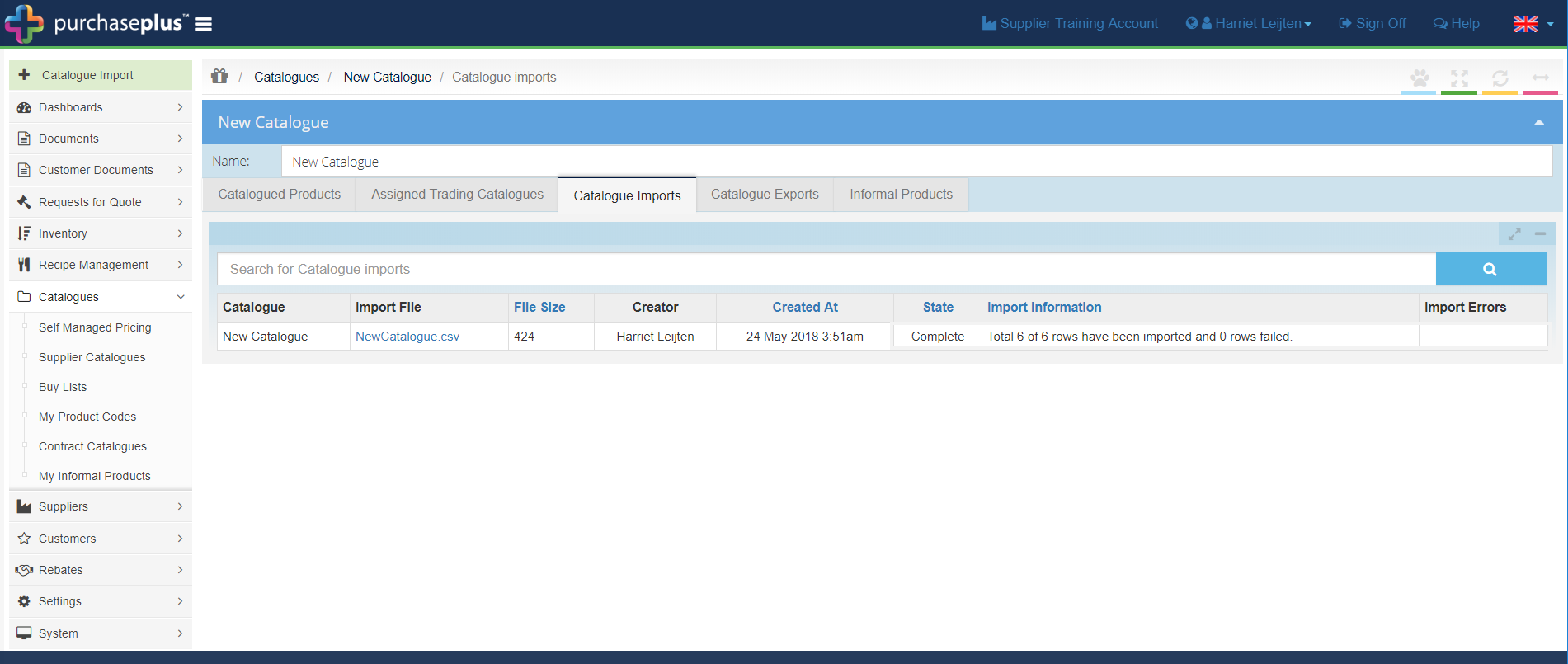
7. To give your Customer(s) access to your newly created Catalogue, click on the [Assigned Trading Catalogues] tab and then the green [+Assigned Trading Catalogues] button.
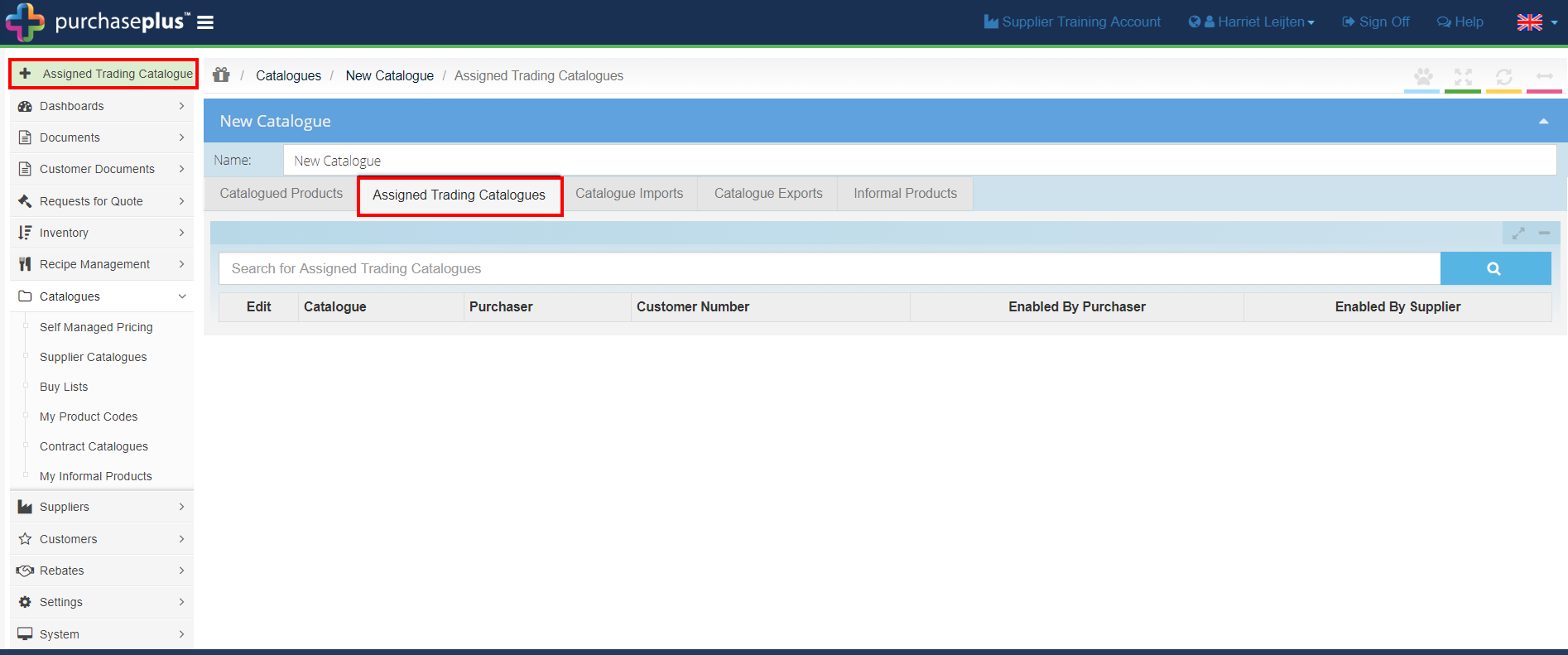
8. From the [Trade Relationship] drop-down, select the Customer you want to have access to this new Catalogue. Then click [Save.]
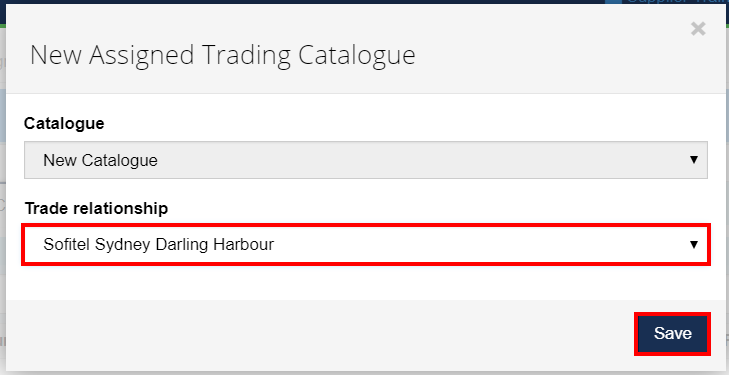
You have now created a new catalogue from your Customer's Buy List and given them access to it.
How to send a potential customer a quote
To send a potential customer a quote, follow steps 1 & 2 outlined here, and email the spreadsheet over to the customer for their review.
If the potential customer decides to go ahead and accept the quote, follow the step 3 outlined in this article.